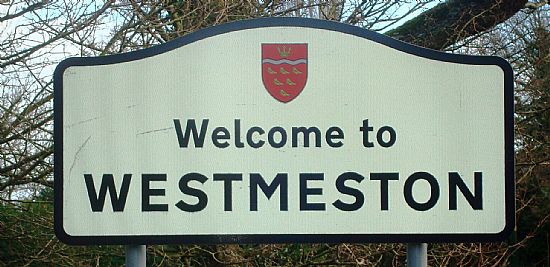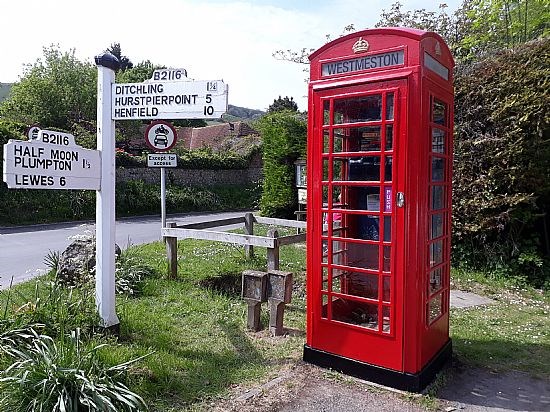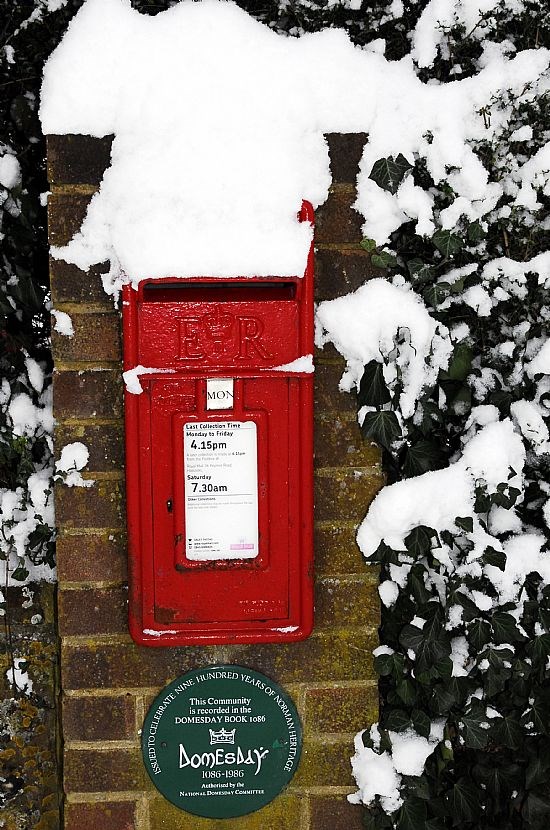Westmeston is located in the South Downs National Park and with the northern half of the parish outside the park under Lewes District Council. The parish (population circa 300) covers 3.27 square miles in a long narrow strip with chalk downland in the south and then through wooded and arable wealden land to the north. This historical arrangement is typical of neighbouring parishes, and provides each with areas for grazing, forestry and raising of crops. The main settlements are positioned around churches. St. Martin’s Church is the centre of the conservation area at Church Corner.
From highest areas of about 800ft above sea level near Ditchling Beacon, the land drops steeply to about 325ft and then undulates further north to an average of about 220ft.
The parish is near to the western boundary of East Sussex and borders Ditchling to the west, convenient for the health centre, post office, pubs, café, pharmacy and small shops. Further west in Hassocks can be found a more comprehensive selection of services including small local supermarkets. Westmeston has a farm shop in Middleton Common Lane, a golf club in Spatham Lane and a Parish Hall on Lewes Road which opened in 2000 and is available for hire.
The ancient and attractive county town of Lewes is 7 miles away and is the centre for local government.
The area is well served by a network of bridleways, footpaths and permissive paths. Riding, cycling and walking are popular with locals and the increasing numbers of visitors to the area. The main vehicular route B2116 west/east gives access to the northern routes via Spatham Lane and Hundred Acre Lane. Railway access is at Hassocks to the west and Plumpton in the east.
There are many volunteer groups who share a strong interest in conservation such as The Westmeston Jubilee Pathway Trust, the Monday Group, Mid Sussex Bridleways Group and the Footpaths Preservation Society.
The Westmeston area is rural with agricultural activity, both arable and grazing. It is mainly residential and some of the land is used for equestrian interests (both commercial and private) and vineyards.
Westmeston Village Well
This well probably dates back to the late Bronze Age. Climate changes in that age brought settlements down from the exposed top of the Downs and it was the availability of reliable year-round water at a reasonable well depth, which governed the siting of the early Downs foot settlements – Poynings, Faulking, Clayton, Westmeston, Plumpton and Offham.
Water was and still is, fundamental to life. But in early Christian times it had an even greater significance. Before the establishment of courts of justice, beginning in the 12th century, the common form of justice was “trial by ordeal”. This was conducted in or adjacent to the local church and the nearest well to the church thus acquired great importance to the villagers because ordinary people were tried for common offences such as robbery by “Trial by Water”. In this, following a service at the church, the accused in the presence of a priest was gently lowered down the well. If he drowned, he was pronounced ‘innocent’. If he survived when the rope was pulled up, he was pronounced ‘guilty’ and had to pay the appropriate penalty – for example 200 shillings for killing a labourer or churl. This trial was based on the oath of St Dunstan “Let not the water receive the body of him who is upborne by the wind of iniquity”
Eventually the Pope realised that trial by ordeal was not really fair to the innocent and abolished it partially in 1215 and by King Henry 111 totally in 1219.
Undoubtedly this well opposite St Martin’s Church would have been used on a number of occasions, because unlike today not all Westmeston inhabitants were above a little bit of thievery. In those days the Health and Safety Executive was not so strict as it is today so the well water was still considered drinkable after the innocent corpse was hauled up!
Harold Rowling MBE
Village Historian



